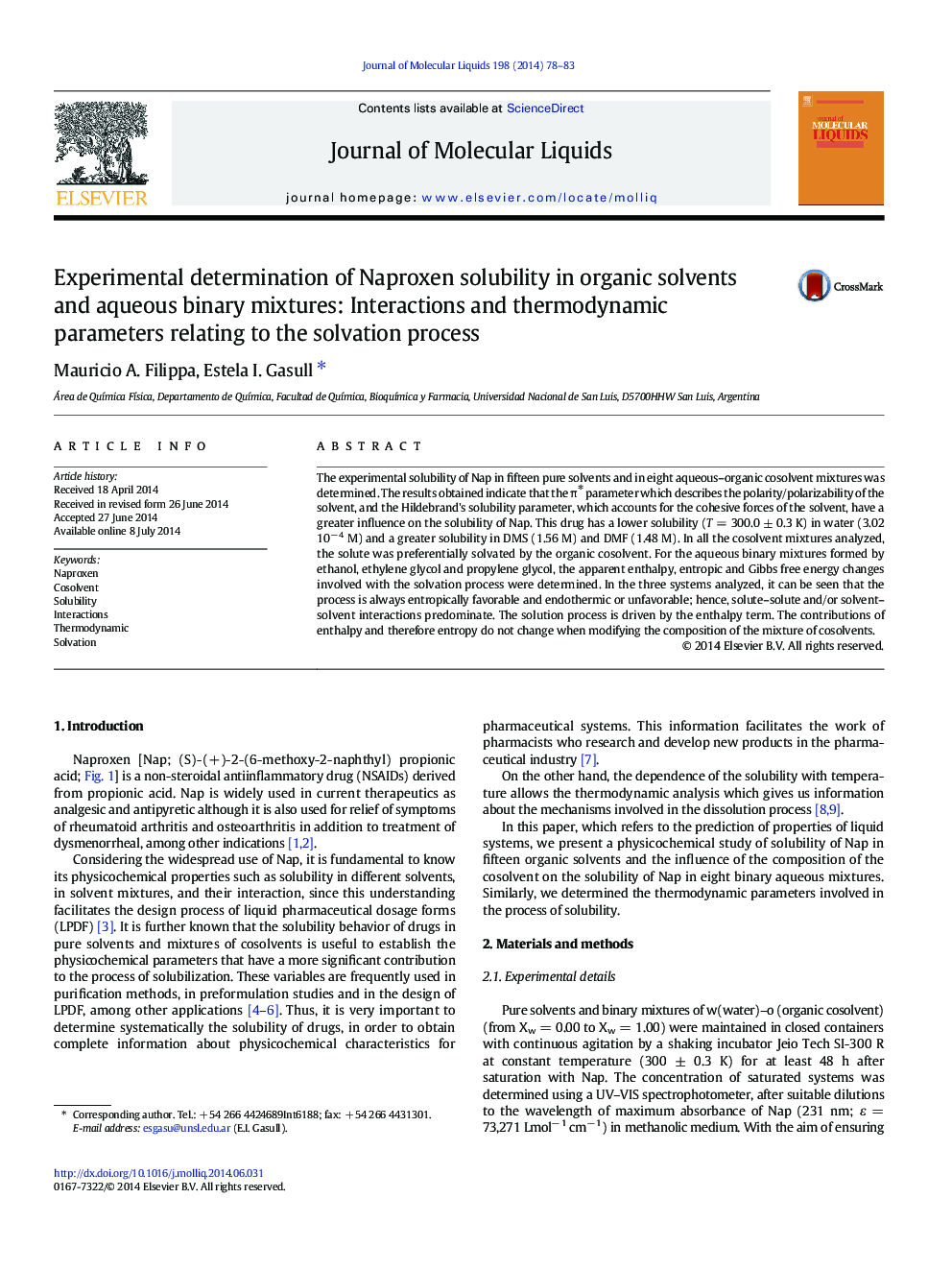| Article ID | Journal | Published Year | Pages | File Type |
|---|---|---|---|---|
| 5411412 | Journal of Molecular Liquids | 2014 | 6 Pages |
Abstract
The experimental solubility of Nap in fifteen pure solvents and in eight aqueous-organic cosolvent mixtures was determined. The results obtained indicate that the Ïâ parameter which describes the polarity/polarizability of the solvent, and the Hildebrand's solubility parameter, which accounts for the cohesive forces of the solvent, have a greater influence on the solubility of Nap. This drug has a lower solubility (T = 300.0 ± 0.3 K) in water (3.02 10â 4 M) and a greater solubility in DMS (1.56 M) and DMF (1.48 M). In all the cosolvent mixtures analyzed, the solute was preferentially solvated by the organic cosolvent. For the aqueous binary mixtures formed by ethanol, ethylene glycol and propylene glycol, the apparent enthalpy, entropic and Gibbs free energy changes involved with the solvation process were determined. In the three systems analyzed, it can be seen that the process is always entropically favorable and endothermic or unfavorable; hence, solute-solute and/or solvent-solvent interactions predominate. The solution process is driven by the enthalpy term. The contributions of enthalpy and therefore entropy do not change when modifying the composition of the mixture of cosolvents.
Related Topics
Physical Sciences and Engineering
Chemistry
Physical and Theoretical Chemistry
Authors
Mauricio A. Filippa, Estela I. Gasull,
